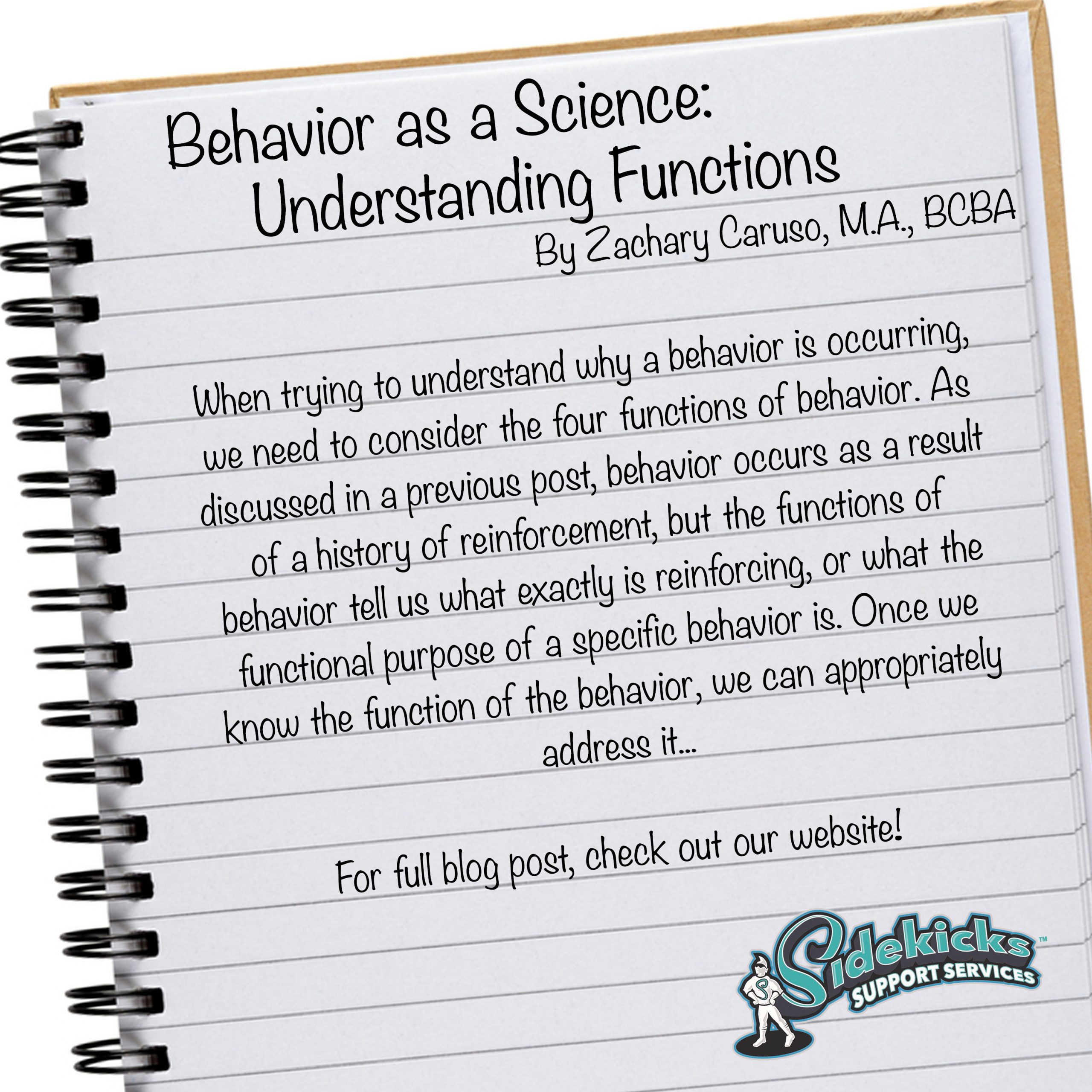When trying to understand why a behavior is occurring, we need to consider the four functions of behavior. As discussed in a previous post, behavior occurs as a result of a history of reinforcement, but the functions of behavior tell us what exactly is reinforcing, or what the functional purpose of a specific behavior is. Once we know the function of the behavior, we can appropriately address it.
The four functions of behavior are attention-seeking, escape/avoidance, access to tangibles/activities, and automatic reinforcement. Attention-seeking behaviors include any behavior that occurs to gain the attention of others. Escape or avoidance behaviors occur in order to escape or to delay something such as an activity or a demand. The access to tangibles function refers to any behavior that occurs in order to gain access to a specific tangible item or activity. Finally, automatic reinforcement refers to behaviors that in and of themselves provide reinforcement to the individual engaging in them. In other words, the behavior itself is reinforcing.
By understanding which of these functions is reinforcing a behavior, we allow ourselves to develop a more informed approach to behavior modification. We now can consider what strategies might be effective and what skills to teach. In order to determine what the function of a behavior is, we conduct an assessment called a Functional Behavior Assessment (FBA).
FBAs are thorough, data-based assessments that help to scientifically determine what a behavior’s function is. Understanding behavioral function is key when developing a Behavior Intervention Plan (BIP). By understanding the function of a behavior, we understand how to better develop a treatment plan that is specifically tailored to the individual needs of the learners with which we work.
By Zachary Caruso, M.A., BCBA


0 Comments